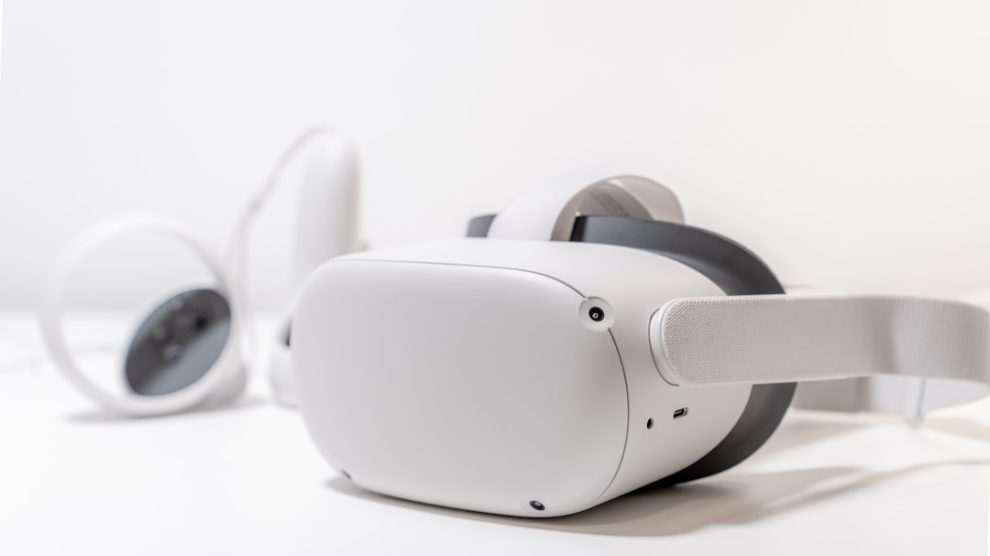Virtual reality (VR) is a technology that allows users to experience a simulated environment through the use of computer-generated visuals and sounds. It immerses users in a virtual world, making them feel as if they are physically present in that environment. On the other hand, e-commerce refers to the buying and selling of goods and services over the internet. It has revolutionized the way people shop, providing convenience and accessibility to consumers worldwide.
The combination of virtual reality and e-commerce has the potential to be a game-changer in the industry. Virtual reality enhances the online shopping experience by providing a more immersive and interactive environment for consumers. It allows them to explore products in a virtual space, try them on virtually, and make informed purchasing decisions. This technology has the power to transform the way people shop online and has already gained traction among various companies.
Virtual Reality in E-commerce: A Game-Changer
Virtual reality is changing the e-commerce industry by providing a more engaging and interactive shopping experience for consumers. It allows them to visualize products in a three-dimensional space, giving them a better understanding of their size, shape, and features. For example, furniture retailers can use virtual reality to create virtual showrooms where customers can virtually walk through and interact with different furniture pieces before making a purchase.
Several companies have already embraced virtual reality in their e-commerce strategies. One notable example is IKEA, which launched an app called IKEA Place that allows users to virtually place furniture in their homes using augmented reality technology. This gives customers a realistic preview of how the furniture will look in their space before making a purchase. Another example is Sephora, a beauty retailer that offers a virtual reality experience where customers can try on different makeup products virtually.
Benefits of Virtual Reality in E-commerce
The integration of virtual reality into e-commerce offers several benefits for both businesses and consumers.
Enhanced customer experience: Virtual reality provides a more immersive and interactive shopping experience for consumers. It allows them to explore products in a virtual environment, giving them a better understanding of the product’s features and functionality. This enhanced experience can lead to increased customer satisfaction and loyalty.
Increased customer engagement: Virtual reality engages customers on a deeper level by allowing them to interact with products in a virtual space. This increased engagement can lead to higher conversion rates and repeat purchases.
Improved customer satisfaction: By providing a more realistic and immersive shopping experience, virtual reality can improve customer satisfaction. Customers can make more informed purchasing decisions by virtually trying on products or visualizing how they will look in their space.
Boosted sales: The combination of enhanced customer experience, increased engagement, and improved customer satisfaction ultimately leads to boosted sales for businesses. Virtual reality can help businesses stand out from their competitors and attract more customers.
Virtual Reality Technology for E-commerce
There are different types of virtual reality technology used in e-commerce, including virtual reality headsets, augmented reality apps, and 360-degree product visualization.
Virtual reality headsets: These devices immerse users in a virtual environment by blocking out the real world and replacing it with computer-generated visuals and sounds. Users can interact with the virtual environment using controllers or hand gestures.
Augmented reality apps: These apps overlay virtual objects onto the real world, allowing users to interact with them in their physical space. Users can use their smartphones or tablets to access these apps and experience augmented reality.
360-degree product visualization: This technology allows users to view products from all angles by providing a 360-degree view of the product. Users can rotate the product virtually and zoom in to see the details.
Virtual reality technology works in e-commerce by integrating these technologies into the online shopping experience. Businesses can create virtual showrooms or virtual try-on experiences using virtual reality headsets or augmented reality apps. They can also provide 360-degree product visualization on their websites to give customers a better understanding of the product.
Virtual Reality Shopping Experience: The Future of E-commerce
The future of e-commerce lies in virtual reality shopping experiences. As technology continues to advance, virtual reality will become more accessible and affordable, allowing more businesses to incorporate it into their e-commerce strategies.
Virtual reality will shape the future of e-commerce by providing a more immersive and personalized shopping experience for consumers. Customers will be able to virtually walk through virtual stores, interact with products, and make purchases without leaving their homes. This will revolutionize the way people shop online and bridge the gap between physical and online retail.
Predictions for the future of virtual reality in e-commerce include the widespread adoption of virtual reality headsets, the integration of artificial intelligence into virtual reality shopping experiences, and the development of virtual reality social shopping platforms. These advancements will further enhance the customer experience and drive the growth of e-commerce.
Virtual Reality in E-commerce: Enhancing Customer Engagement

Virtual reality enhances customer engagement by providing a more interactive and immersive shopping experience. It allows customers to interact with products in a virtual environment, giving them a better understanding of the product’s features and functionality.
One example of a company using virtual reality to enhance customer engagement is Adidas. The sportswear brand launched a virtual reality experience called “Adidas VRCT” where customers can design their own personalized jacket using virtual reality technology. This interactive experience allows customers to customize their jacket by choosing different colors, patterns, and patches.
Another example is Lowe’s, a home improvement retailer that offers a virtual reality experience called “Holoroom How To.” This experience allows customers to learn how to complete DIY projects by virtually walking through step-by-step instructions in a virtual environment. This interactive experience engages customers and provides them with valuable knowledge and skills.
Virtual Reality in E-commerce: Boosting Sales
Virtual reality has the potential to boost sales in e-commerce by providing a more immersive and realistic shopping experience. By allowing customers to interact with products in a virtual environment, businesses can increase customer engagement and ultimately drive more sales.
One example of a company using virtual reality to boost sales is Audi. The car manufacturer offers a virtual reality experience called “Audi VR Experience” where customers can virtually explore and customize their dream car. This immersive experience allows customers to visualize the car’s features and options, leading to increased interest and potential sales.
Another example is Alibaba, a leading e-commerce platform in China. The company launched a virtual reality shopping experience called “Buy+” where customers can virtually browse and purchase products from their favorite brands. This virtual reality shopping experience provides a more engaging and interactive way for customers to shop, leading to increased sales for businesses.
Virtual Reality in E-commerce: Improving Customer Satisfaction
Virtual reality improves customer satisfaction in e-commerce by providing a more realistic and immersive shopping experience. By allowing customers to virtually try on products or visualize how they will look in their space, businesses can reduce the risk of customer dissatisfaction and returns.
One example of a company using virtual reality to improve customer satisfaction is Warby Parker, an eyewear retailer. The company offers a virtual try-on experience where customers can virtually try on different glasses frames using their smartphone or computer. This allows customers to see how the glasses will look on their face before making a purchase, reducing the risk of dissatisfaction.
Another example is Wayfair, an online furniture retailer. The company offers a virtual reality app called “Wayfair Spaces” where customers can virtually place furniture in their homes using augmented reality technology. This allows customers to see how the furniture will look in their space before making a purchase, leading to increased customer satisfaction.
Virtual Reality in E-commerce: Cost-Effective Solution for Businesses
Virtual reality is a cost-effective solution for businesses in e-commerce. While the initial investment in virtual reality technology may be high, it can lead to long-term cost savings and increased efficiency.
One way virtual reality can save costs for businesses is by reducing the need for physical showrooms or retail spaces. By creating virtual showrooms or virtual try-on experiences, businesses can eliminate the costs associated with maintaining a physical space and reduce overhead expenses.
Virtual reality can also save costs by reducing the risk of customer dissatisfaction and returns. By allowing customers to virtually try on products or visualize how they will look in their space, businesses can reduce the likelihood of customers being dissatisfied with their purchase and returning it. This can save businesses the costs associated with processing returns and restocking inventory.
Make Extra Money: Virtual Reality Opportunities in E-commerce
There are several opportunities for entrepreneurs to make extra money through virtual reality in e-commerce. One opportunity is to create and sell virtual reality content or experiences. Entrepreneurs can develop virtual reality apps, games, or experiences and sell them on virtual reality platforms or marketplaces.
Another opportunity is to provide virtual reality consulting services to businesses. Entrepreneurs with expertise in virtual reality technology can offer their services to businesses looking to integrate virtual reality into their e-commerce strategies. This can include helping businesses create virtual showrooms, develop virtual try-on experiences, or optimize their websites for virtual reality.
Virtual reality is a game-changer in the e-commerce industry, providing a more immersive and interactive shopping experience for consumers. It enhances customer engagement, improves customer satisfaction, and boosts sales for businesses. Virtual reality technology, such as virtual reality headsets, augmented reality apps, and 360-degree product visualization, is used in e-commerce to create virtual showrooms, virtual try-on experiences, and other interactive experiences for customers.
The future of e-commerce lies in virtual reality shopping experiences, where customers can virtually walk through stores, interact with products, and make purchases without leaving their homes. Virtual reality will continue to shape the future of e-commerce, with advancements in technology and the integration of artificial intelligence. Virtual reality offers opportunities for entrepreneurs to make extra money by creating and selling virtual reality content or providing virtual reality consulting services to businesses. Overall, virtual reality is revolutionizing the e-commerce industry and will continue to play a significant role in the future.









Add Comment